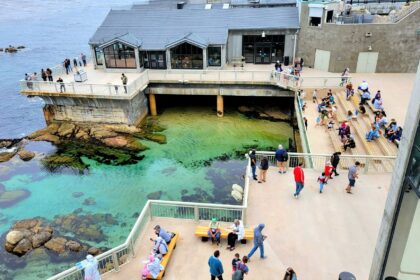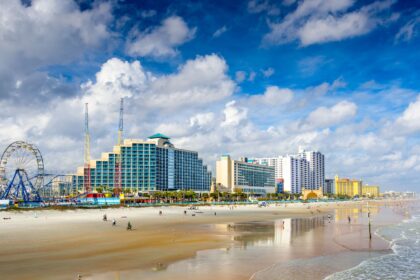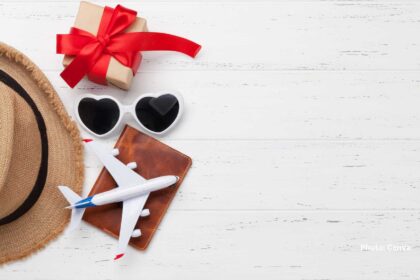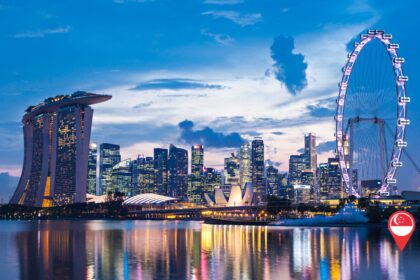The United States is a land of incredible geographical diversity. From the scorching deserts of the Southwest to the snowy peaks of the Rockies, and from the humid tropics of Florida to the damp rainforests of the Pacific Northwest, packing for a trip across the US can feel like preparing for multiple continents. In 2025, with travel becoming increasingly dynamic and often involving varied destinations, mastering the art of versatile packing is essential for U.S. travelers.
This comprehensive guide will equip you with the knowledge to pack efficiently and effectively for any US climate, ensuring you’re comfortable, prepared, and ready for adventure, whether you’re chasing snow in Colorado or sun in California.
I. The Core Philosophy: Layers, Versatility & Adaptability
Forget the idea of packing for a single weather forecast. The key to conquering diverse US climates is the layering system. This method allows you to add or remove clothing as temperatures and conditions change throughout the day or across different regions.
- Base Layer: Wicks moisture away from your skin (e.g., merino wool, synthetic blends). Essential for both cold (keeping you dry and warm) and hot climates (preventing clamminess).
- Mid-Layer: Provides insulation (e.g., fleece, down vest, lightweight sweater). Adds warmth without excessive bulk.
- Outer Layer: Protects from wind, rain, or snow (e.g., waterproof jacket, windbreaker, insulated parka). Your shield against the elements.
- Versatile Staples: Choose items that can be mixed and matched, dressed up or down, and worn in various temperatures. Think neutral colors and classic pieces.
II. Understanding the US Climates: What to Expect & When
Before you pack, know your destination’s climate profile. The US broadly divides into several climate zones:
- Northeast & Midwest (e.g., New York, Chicago, Boston):
- Winter (Dec-Feb): Cold, snowy, icy. Freezing temperatures, heavy precipitation.
- Spring (Mar-May): Mild, wet, unpredictable. Can swing from cool to warm.
- Summer (Jun-Aug): Hot, humid. Thunderstorms common.
- Fall (Sep-Nov): Cool, crisp, colorful. Pleasant days, chilly nights.
- Southeast (e.g., Florida, Georgia, Louisiana):
- Winter (Dec-Feb): Mild, occasional cool fronts. Rarely freezing.
- Spring (Mar-May): Warm, humid, increasing thunderstorms.
- Summer (Jun-Aug): Hot, very humid, daily thunderstorms, hurricane season risk.
- Fall (Sep-Nov): Warm, humid, hurricane season risk tapers.
- Southwest (e.g., Arizona, Nevada, Southern California):
- Winter (Dec-Feb): Mild to cool days, cold nights. Minimal rain, snow at higher elevations.
- Spring (Mar-May): Warm, dry, pleasant.
- Summer (Jun-Aug): Extremely hot, very dry. Monsoon season (late summer) brings humidity and thunderstorms.
- Fall (Sep-Nov): Warm, dry, pleasant.
- Rocky Mountains (e.g., Colorado, Utah, Montana):
- Winter (Dec-Mar): Very cold, heavy snow, ideal for skiing.
- Spring (Apr-May): Thawing, wet, muddy. Can still snow.
- Summer (Jun-Aug): Warm days, cool nights. Afternoon thunderstorms common. High altitude sun.
- Fall (Sep-Nov): Cool, crisp, first snows begin.
- Pacific Northwest (e.g., Seattle, Portland):
- Winter (Nov-Mar): Cool, very wet (rain, not typically snow at sea level), damp.
- Spring (Apr-May): Mild, wet, gradually drier.
- Summer (Jun-Aug): Warm, dry, sunny. Pleasant.
- Fall (Sep-Oct): Mild, wet, gradually colder.
- California (Coastal vs. Inland):
- Coastal (e.g., San Francisco, Los Angeles): Mild year-round, fog in summer. “June Gloom.”
- Inland (e.g., Central Valley, Desert): Hot dry summers, cool wet winters.
III. The Essential Packing List: From Deserts to Snow

This master list covers the essentials, with notes on how to adapt for specific climates.
A. Clothing
- Tops (Focus on Layers):
- Moisture-Wicking Base Layers (2-3): Essential for regulating body temperature. Choose lightweight synthetic or merino wool for both hot (prevents sweat buildup) and cold (keeps you dry) climates.
- Lightweight T-Shirts/Tanks (3-5): Breathable fabrics like cotton blends, linen, or quick-dry synthetics. For warm weather, or as a base layer in cooler temps.
- Long-Sleeved Shirts (1-2): Cotton or linen for sun protection in deserts, or a thin merino/synthetic for layering in cooler climates.
- Mid-Layer Fleece/Sweater (1-2): A lightweight fleece jacket or a merino wool sweater provides excellent insulation without bulk. Crucial for cool evenings or cold days.
- Dressier Top/Shirt (1): For nicer dinners or events, something versatile that doesn’t wrinkle easily.
- Bottoms (Versatility is Key):
- Convertible Pants (1): Pants that zip off into shorts are fantastic for varying temperatures and activities (hiking, city exploration).
- Jeans/Comfortable Pants (1-2): A versatile staple for cooler weather, evenings, or casual wear.
- Shorts/Skirts (1-2): For warm climates. Quick-dry materials are a bonus.
- Leggings/Thermals (1-2 pairs): For cold climates (as a base layer under pants) or comfortable travel.
- Swimsuit (1): Even if it’s not a beach trip, many hotels have pools. Essential for warm climates.
- Outerwear (Your Climate Shield):
- Waterproof & Windproof Jacket (1): A lightweight, packable rain jacket is crucial for almost any US climate (even deserts can have flash floods or unexpected showers). Look for Gore-Tex or similar technology.
- Insulated Jacket (1):
- Cold/Snowy Climates (Northeast, Rockies, Midwest Winters): A heavy, insulated parka or a packable down jacket (800-fill power or higher) with a waterproof shell.
- Mild/Cool Climates (PNW, Coastal CA, Southeast Winters): A lighter insulated jacket or a heavier fleece can suffice.
- Light Windbreaker (1): Excellent for cool breezes in any season.
- Undergarments & Sleepwear:
- Underwear (7-10 pairs): Quick-dry synthetics or merino wool are great for travel.
- Socks (5-7 pairs):
- Warm Climates/Hiking: Moisture-wicking athletic socks (synthetic or merino).
- Cold/Snowy Climates: Thick wool or thermal socks.
- Casual: Cotton blends.
- Pajamas/Sleepwear (1-2 sets): Comfortable for hotel stays.
B. Footwear
Choosing the right shoes is paramount for comfort and safety.
- Versatile Walking Shoes (1 pair): Comfortable, supportive sneakers are essential for city exploration, airport navigation, and light trails.
- Sandals/Flip-flops (1 pair): For warm climates, beach days, or as shower shoes.
- Hiking Shoes/Boots (1 pair): If your itinerary includes serious hiking, choose waterproof options with good ankle support.
- Dressier Shoes (1 pair): Optional, for evenings out. Choose something that packs flat.
- Waterproof Boots (for Snow/Heavy Rain): Crucial for winter trips or wet regions. Look for insulated, waterproof options for snow.
C. Accessories
- Headwear:
- Wide-brimmed Hat/Baseball Cap: Essential for sun protection in any sunny climate (deserts, beaches, mountains).
- Beanie/Warm Hat: For cold weather.
- Gloves/Mittens: For very cold or snowy climates.
- Neckwear:
- Scarf: A lightweight scarf can offer sun protection in the desert or a touch of warmth in cooler climates. A heavier scarf is essential for winter.
- Sunglasses: Non-negotiable for any sunny US climate.
- Belt: A versatile belt that matches multiple outfits.
D. Health & Personal Care
- First-Aid Kit: Band-Aids, antiseptic wipes, pain relievers, blister treatment (moleskin is a lifesaver!).
- Personal Medications: Ample supply with prescriptions.
- Sunscreen: High SPF, even on cloudy days or in snowy environments (snow reflects UV).
- Insect Repellent: Especially for humid, forested, or coastal areas.
- Moisturizer/Lip Balm with SPF: Essential for dry climates (desert) and cold, windy environments.
- Hand Sanitizer: Always useful.
- Toiletries: Travel-sized to save space. Consider solid toiletries to avoid leaks.
E. Gear & Electronics
- Reusable Water Bottle: Stay hydrated, especially in dry or hot climates. Fill up at airports, hotels, and public fountains.
- Backpack/Daypack: For daily excursions, hikes, or carrying layers.
- Portable Charger/Power Bank: Keep devices charged, especially when exploring.
- Camera & Accessories: Capture those diverse landscapes!
- Headphones: For flights, road trips, or just relaxing.
- Adapters: If traveling with non-US electronics (unlikely for US citizens unless you’re living abroad and returning, but good to note).
- Reusable Shopping Bag: For souvenirs or groceries, reducing plastic waste.
F. Documents & Money
- ID/Driver’s License: Essential for travel and identification.
- Credit/Debit Cards: Inform your bank of travel plans to avoid fraud alerts.
- Cash: Small denominations for tips or small purchases.
- Travel Insurance Information: Policy number, emergency contact details. (Highly recommended for any US traveler!)
- Hotel Reservations/Flight Info (Digital & Printed Backups):
- Emergency Contacts: Both digital and a physical copy.
IV. Climate-Specific Packing Adjustments
Now, let’s fine-tune for those distinct US climates.
A. Desert (e.g., Arizona, Nevada, Southern California – Summer)
- Focus: Extreme heat during the day, significant temperature drops at night, intense sun.
- Add:
- Light-colored, loose-fitting, long-sleeved clothing: Protects from sun, prevents sunburn. Think linen or lightweight cotton.
- Wide-brimmed hat: Non-negotiable for sun protection.
- Electrolyte packets: To mix with water and combat dehydration.
- Hydration pack/Large water bottle: You’ll drink a lot of water.
- Bandana/Buff: Can be soaked in water for cooling or used for dust protection.
- Remove/Minimize: Heavy layers, dark colors (attract heat).
B. Snow & Extreme Cold (e.g., Rockies, Northeast, Midwest – Winter)
- Focus: Freezing temperatures, snow, ice, wind.
- Add:
- Thermal Base Layers: Wool or synthetic, both top and bottom.
- Warm Mid-Layers: Heavy fleece, down sweater/vest.
- Heavy Insulated, Waterproof/Windproof Outerwear: Parka, snow pants.
- Insulated, Waterproof Boots: With good traction for snow and ice.
- Warm Hat, Gloves/Mittens, Scarf: Essential for exposed skin.
- Hand/Toe Warmers: Small packets that provide warmth.
- Goggles/Ski Goggles: If participating in snow sports.
- Remove/Minimize: Anything that isn’t warm or waterproof.
C. Humid & Tropical (e.g., Florida, Hawaii, Southern Coastal – Summer)
- Focus: High heat, high humidity, frequent thunderstorms, tropical downpours.
- Add:
- Quick-dry, breathable fabrics: Linen, light cotton, moisture-wicking synthetics.
- Rain jacket (lightweight): You’ll need it daily in some areas.
- Plenty of changes of clothes: You’ll sweat, and clothes may take longer to dry.
- Sandals/water shoes: For easy drying and beach activities.
- Insect repellent: Especially for evenings and natural areas.
- Remove/Minimize: Heavy fabrics, restrictive clothing.
D. Temperate & Variable (e.g., PNW, Northeast/Midwest – Spring/Fall, California Coast)
- Focus: Moderate temperatures, but can change quickly. Rain is possible in most seasons.
- Add:
- Versatile layers: Long-sleeved shirts, light sweaters, a good waterproof jacket.
- Jeans/versatile pants: Suitable for most conditions.
- Closed-toe walking shoes: Comfortable and suitable for varied weather.
- Compact umbrella: Always a good idea.
- Remove/Minimize: Overly specialized gear unless you have specific activities planned.
V. Smart Packing Strategies for Multi-Climate Trips
When visiting multiple climates in one trip, intelligent packing is your superpower.
- Packing Cubes: Organize your clothes by type of weather (e.g., “warm weather tops,” “cold weather layers”) or by outfit. This makes it easy to find what you need without unpacking everything.
- Capsule Wardrobe: Stick to a limited color palette (neutrals like black, white, gray, navy) so all your pieces can be mixed and matched.
- Wear Your Bulkiest Items: Wear your heavy boots, insulated jacket, and heaviest pants on travel days to save space and weight in your luggage.
- Roll, Don’t Fold: Rolling clothes can save space and reduce wrinkles.
- “Just in Case” Items: A compact umbrella, a versatile scarf, and a pair of universal gloves can cover many unexpected weather shifts.
- Laundry on the Go: Pack a small amount of travel detergent or laundry sheets. Many accommodations have laundry facilities, or you can hand wash quick-dry items. This allows you to pack less.
- Check Local Forecasts Right Before You Leave: While general climate guides are good, a 3-5 day forecast for your specific destinations will give you the most accurate immediate packing advice.
Conclusion: Prepared for Every American Adventure
Packing for the vast and varied climates of the United States doesn’t have to be a daunting task. By embracing the principles of layering, prioritizing versatile pieces, and understanding the specific demands of each climate zone, US travelers in 2025 can confidently embark on any adventure. Whether you find yourself hiking through the scorching heat of Death Valley, skiing the powdery slopes of Aspen, or strolling through the misty streets of Seattle, your well-packed bag will be your best companion, ensuring comfort, safety, and the freedom to fully immerse yourself in the incredible diversity that America has to offer. Happy travels!







